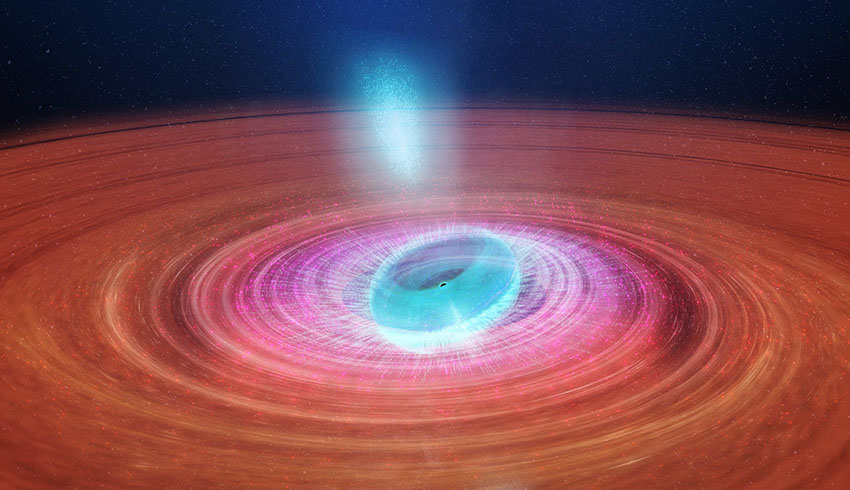Supermassive black holes, with masses ranging from millions to billions of suns, sit at the core of most massive galaxies across the universe. We don’t know exactly how these huge, enormously dense objects took shape, nor what triggers a fraction of them to start devouring the surrounding matter at extremely intense rates, radiating copiously across the electromagnetic spectrum and turning their host galaxies into ‘active galactic nuclei’.
Tackling these open questions in modern astrophysics is among the main goals of two future missions in ESA’s space science programme: Athena, the Advanced Telescope for High-ENergy Astrophysics, and LISA, the Laser Interferometer Space Antenna. Currently in the study phase, both missions are scheduled for launch in the early 2030s.
Günther Hasinger, ESA director of science, explained, "Athena and LISA are both outstanding missions set to make breakthroughs in many areas of astrophysics. But there is one extremely exciting experiment that we could only perform if both missions are operational at the same time for at least a few years: bringing sound to the ‘cosmic movies’ by observing the merger of supermassive black holes both in X-rays and gravitational waves."
Athena will be the largest X-ray observatory ever built, investigating some of the hottest and most energetic phenomena in the cosmos with unprecedented accuracy and depth.
It is designed to answer two fundamental questions: how supermassive black holes at the centre of galaxies form and evolve, and how ‘ordinary’ matter assembles, along with the invisible dark matter, to form the wispy ‘cosmic web’ that pervades the universe.
Matteo Guainazzi, Athena study scientist at ESA, said, "Athena is going to measure several hundreds of thousands of black holes, from relatively nearby to far away, observing the X-ray emission from the million-degree-hot matter in their surroundings."
Meanwhile, LISA will be the first space-borne observatory of gravitational waves – fluctuations in the fabric of spacetime produced by the acceleration of cosmic objects with very strong gravity fields, like pairs of merging black holes.
Gravitational-wave astronomy, inaugurated only a few years ago, is currently limited to the high-frequency waves that can be probed by ground-based experiments like LIGO and Virgo. These experiments are sensitive to the mergers of relatively small black holes – a few times to a few tens of times more massive than the sun.
LISA will expand these studies by detecting low-frequency gravitational waves, such as the ones released when two supermassive black holes collide during a merger of galaxies.
"LISA will be the first mission of its kind, looking primarily for gravitational waves coming from supermassive black holes smashing into one another," explains Paul McNamara, LISA study scientist at ESA.
A few days before the final phase of the merger, the gravitational wave data will constrain the position of the source to a patch on the sky measuring about 10 square degrees – roughly 50 times the area of the full moon.
This is still pretty large, but would allow Athena to start scanning the sky to search for an X-ray signal from this titanic clash. Simulations indicate that the two spiralling black holes modulate the motion of the surrounding gas, so it is likely that the X-ray signature will have a frequency commensurate to that of the gravitational wave signal.
"We could see the emergence of a new X-ray source, and perhaps witness the birth of an active galactic nucleus, with jets of high-energy particles being launched at close to the speed of light above and beyond the newly formed black hole," explained Guainazzi.

